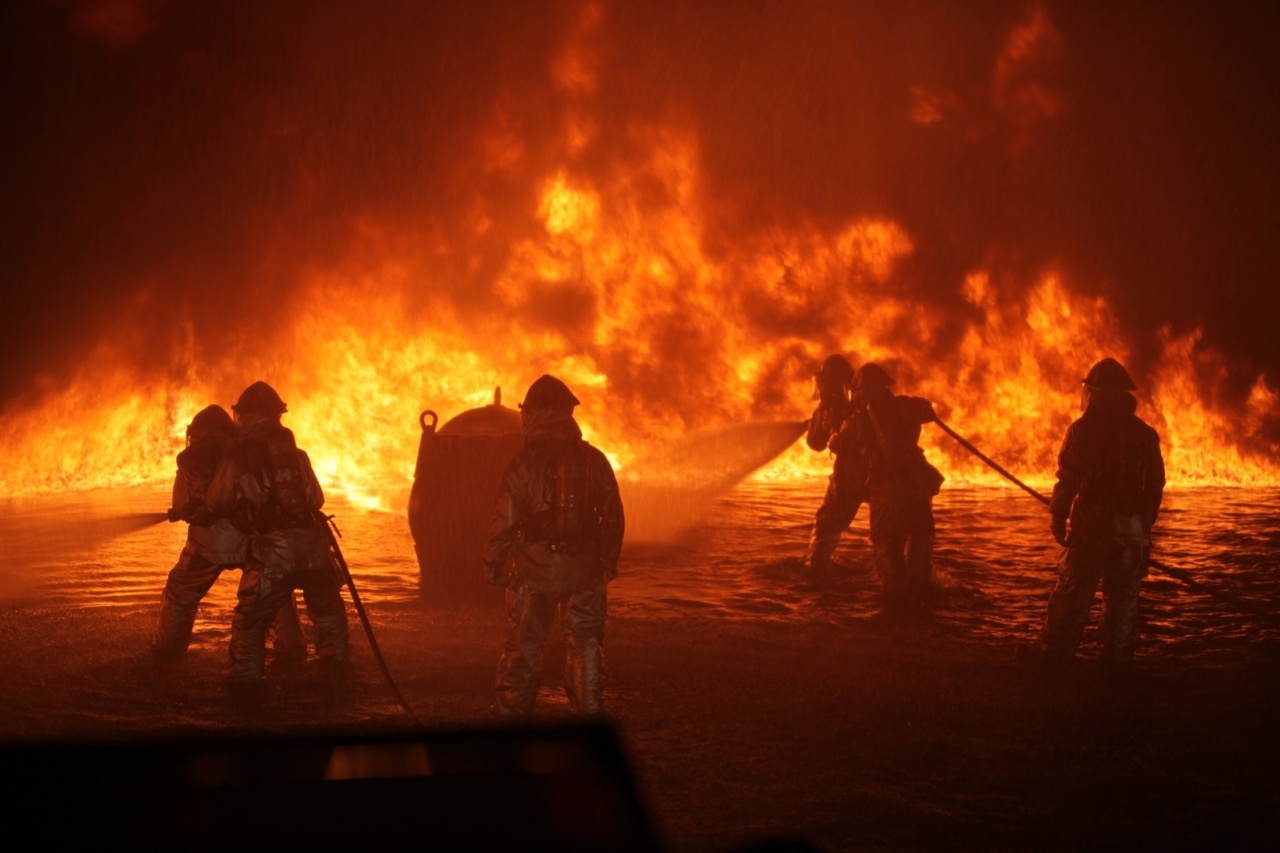Fire smoke can be extremely hazardous to our health, causing various respiratory and cardiovascular issues.
Breathing in the toxic particles and gases emitted during fires can have long-term consequences, leading to both immediate and chronic health problems. It is important to understand the dangers associated with inhaling fire smoke and take appropriate measures to protect ourselves.
1. Respiratory Problems
Inhaling fire smoke can cause a range of respiratory problems, particularly in individuals with pre-existing conditions such as asthma, chronic obstructive pulmonary disease (COPD), and bronchitis.
The smoke irritates the airways, triggering symptoms such as coughing, wheezing, shortness of breath, and chest tightness. People with respiratory conditions are more vulnerable and may experience severe exacerbations during fire events.
2. Lung Damage
The tiny particulate matter present in fire smoke, known as PM2.5, can penetrate deep into the lungs and cause significant damage.
These particles are small enough to bypass the body’s natural defenses in the respiratory tract and enter the bloodstream. Over time, exposure to PM2.5 can lead to inflammation, scarring of lung tissue, and reduced lung function. Prolonged or repeated exposure to fire smoke can increase the risk of chronic respiratory diseases, such as emphysema and lung cancer.
3. Cardiovascular Effects
Fire smoke doesn’t only affect the respiratory system; it also poses risks to cardiovascular health.
The fine particles and toxic gases released during fires can enter the bloodstream through the lungs and contribute to the development of cardiovascular diseases, including heart attacks, strokes, and arrhythmias. Prolonged exposure to fire smoke can cause inflammation, increase blood pressure, and promote the formation of blood clots, all of which are detrimental to the cardiovascular system.
4. Increased Risk for Infections
Fire smoke weakens the immune system, making individuals more susceptible to respiratory infections.
The irritation and damage caused by smoke can impair the body’s natural defenses, allowing bacteria, viruses, and other pathogens to penetrate and infect the respiratory tract more easily. This can lead to conditions such as pneumonia, bronchitis, and sinus infections.
Inhaled smoke can also compromise the function of cilia, the tiny hair-like structures that help remove mucus and trapped particles from the respiratory passages, further hampering the respiratory defense mechanisms.
5. Eye and Skin Irritation
Exposure to fire smoke can cause eye and skin irritation. The small particles in the smoke can adhere to the eyes, causing redness, itching, and burning sensations.
Skin contact with smoke particles and gases may also lead to irritation, rashes, and allergic reactions. Additionally, the chemicals and pollutants released during fires can aggravate existing skin conditions, such as eczema and psoriasis.
6. Mental Health Impacts
Living in areas with frequent wildfires or experiencing the aftermath of a catastrophic fire event can have significant mental health consequences. The loss of homes, possessions, and even loved ones can be traumatizing.
The constant fear and anxiety associated with the threat of fires can lead to stress-related disorders, depression, and post-traumatic stress disorder (PTSD). The long-term psychological impact of fire events on individuals and communities should not be overlooked.
7. Children and Vulnerable Populations
Children, the elderly, pregnant women, and individuals with pre-existing health conditions are particularly vulnerable to the harmful effects of fire smoke.
Children have developing respiratory systems, making them more susceptible to lung damage from inhaled smoke particles. The elderly may already have compromised lung and cardiovascular function, which can be further worsened by exposure to fire smoke.
Pregnant women, particularly during the early stages of pregnancy, need to be cautious as smoke inhalation can harm fetal development.
8. Long-Term Health Risks
Exposure to fire smoke over long periods can have lasting health impacts. The toxic substances in smoke can cause chronic respiratory diseases, decreased lung function, and an increased risk of developing lung cancer.
Additionally, the cardiovascular effects of fire smoke can contribute to the progression of heart diseases, such as atherosclerosis and heart failure. It is crucial to prioritize the prevention and mitigation of wildfires to reduce the long-term health risks associated with fire smoke exposure.
9. Protective Measures
To minimize the health dangers of breathing fire smoke, it is essential to take necessary precautions:.
– Stay informed about local air quality conditions during fire events.
– If advised, stay indoors and keep windows and doors closed to prevent smoke from entering.
– Use high-efficiency particulate air (HEPA) filters or air purifiers to maintain clean indoor air.
– Avoid vigorous outdoor activities that can increase your exposure to smoke.
– Wear masks or respirators recommended for protection against smoke particles.
– Follow evacuation orders and move to safer locations if necessary.
– Stay hydrated to help keep your respiratory system moist and reduce irritation.
10. Prevention and Environmental Actions
Preventing wildfires is crucial to protecting both human health and the environment. Some preventive measures include:.
– Properly disposing of cigarettes and avoiding smoking in fire-prone areas.
– Complying with fire safety guidelines and avoiding the use of open flames in restricted areas.
– Creating defensible spaces around homes by removing dry vegetation and maintaining adequate clearance.
– Supporting initiatives for responsible forestry and land management that reduce the risk of wildfires.
– Investing in early warning systems, firefighting resources, and public education programs.
– Promoting the use of alternative energy sources to reduce reliance on fire-prone fossil fuels.






























